We had a great sleep last night. It is very peaceful here. We promised a pool shot and we got one this morning.

Wow. This place is so amazingly beautiful. The sun sets right outside our window, first a bit pink, then incredibly orange across the entire horizon.
This morning we headed back down to the Manambolo River for a canoe/ pirogue trip up river to visit some caves as well as the Vazimba tribe tombs. The Manambolo river flows from Tana all the way west to the ocean (about 65 km west of here). It was used by tribes to migrate many times. During the rainy season it swells to 30′ deep. In the driest years (like this one) by mid-summer it will be mostly sandbars and less than 3′ deep. The name means “place of good fortune” and was an important place for the local tribes to pray for a prosperous harvest.
Jimmy, our guide for today and tomorrow, tells us that the locals fish for tilapia and shrimp in the river. There are also lots of fresh water snails (escargot?) but apparently the locals do not eat them. And there are the occasional crocodile in the river, but Jimmy says they do not like Vazaha. We’re not sure a croc is that picky, but we’ll take his word for it.
The caves are formed when ground water from the top of the cliffs seeps through small cracks and erodes the limestone from the inside out. Inside they are full of amazing stalactites and stalagmites.


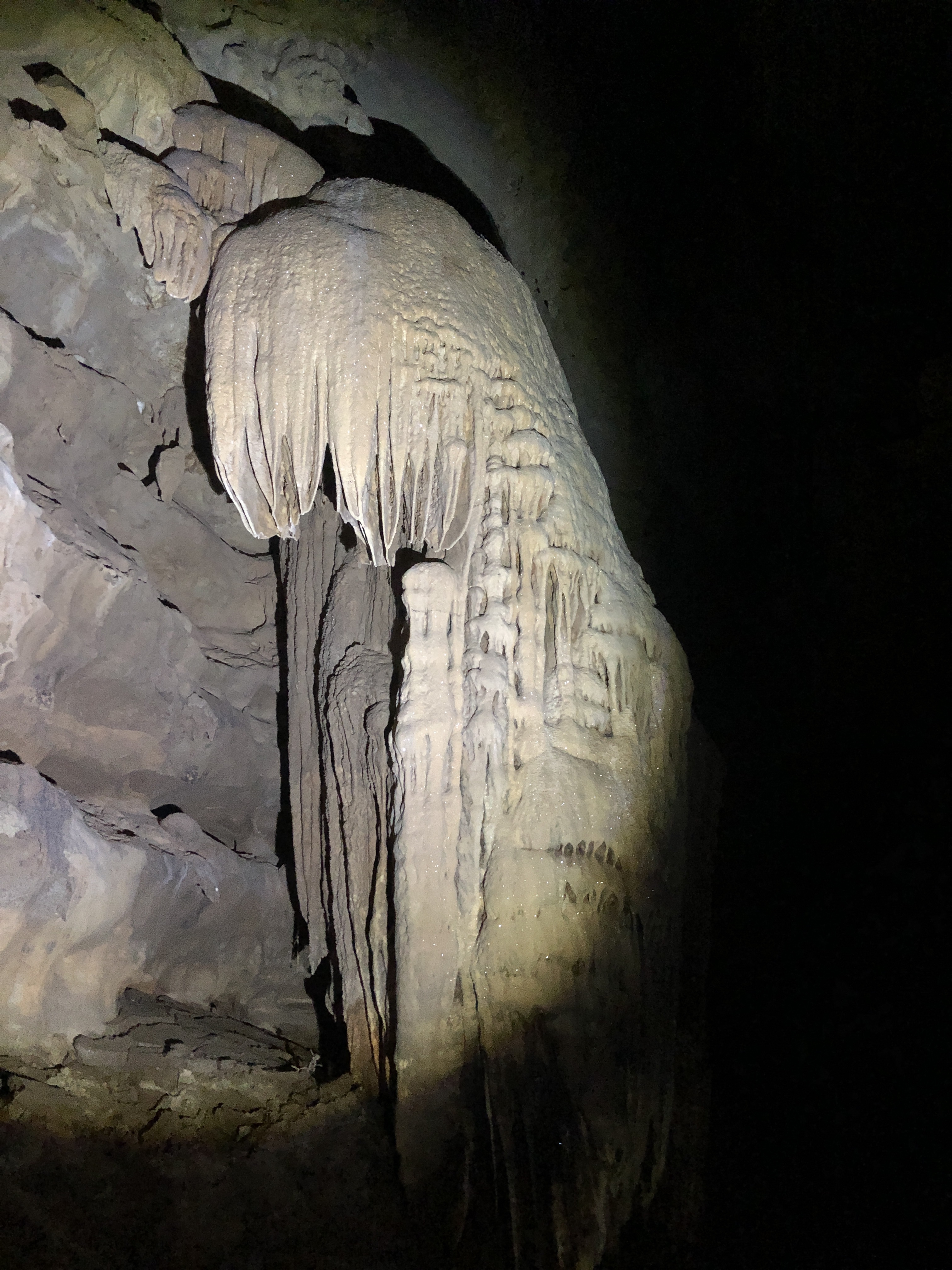

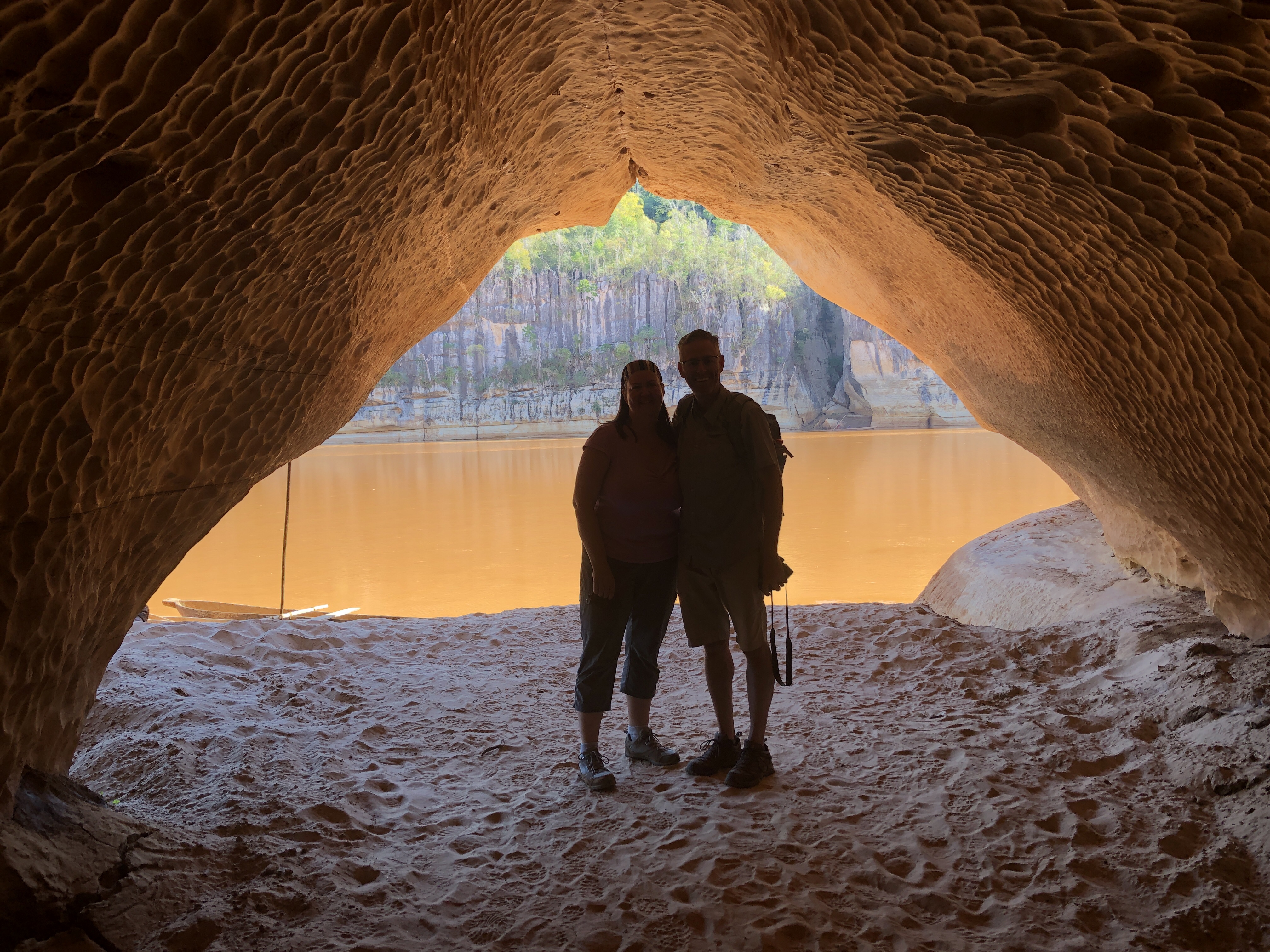

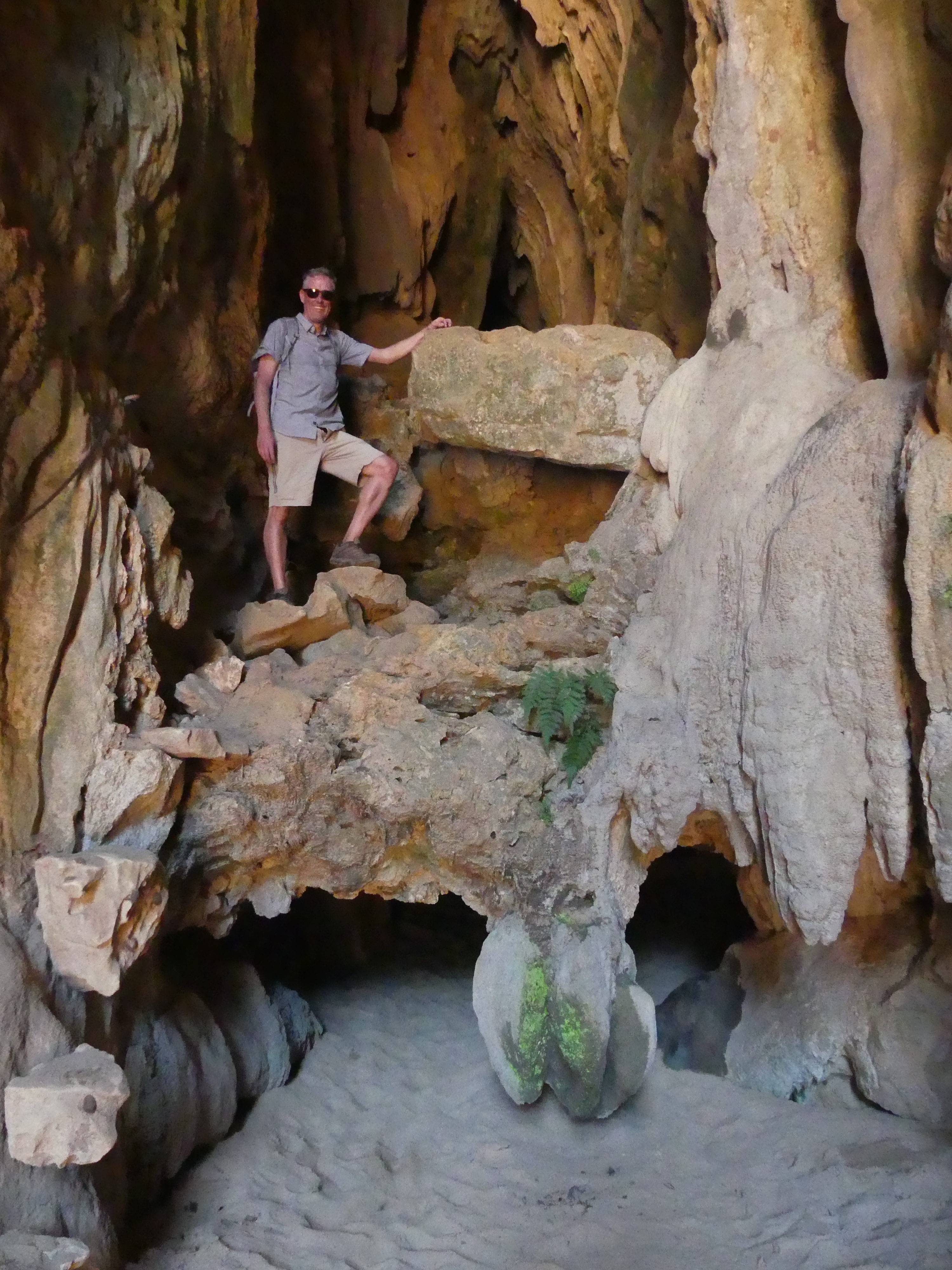
The Vazimba tribe lived around the river many years ago and interred their dead in limestone caves and crevasses. This is a Vazimba tomb – all we can see from the river are three skulls, but the space is filled with bones.


Up river and back down took about and hour and half overall with our boatman using a paddle and/or a pole. The morning started off nice and cool and ended quite warm. There was a bit of a breeze that helped.
The entrance to the Petit Tsingy is right in the village. Jimmy took us around. It is a labyrinth complete with ladders, wood bridges and stones and cables strategically bolted to the limestone walls. We would not have gotten out without Jimmy!
Tsingy means karst in Malagasy. Or “the place where one cannot walk barefoot” or “walking on tiptoes” – there are a few translations. The tsingy has a similar origin as the massif in Isalo. 200 million years ago when Madagascar broke away from Africa, the ebbing and flowing seas deposited limestone in layers. When the Malagasy plate hit another, the original seabed arose to create a plateau which was then eroded by rainfall into these pointed ridges in random lines. The ‘circuit’ through the Petit Tsingy is narrow and squishy in lots of places . Jimmy actually said ‘don’t be fat here’ a few times.
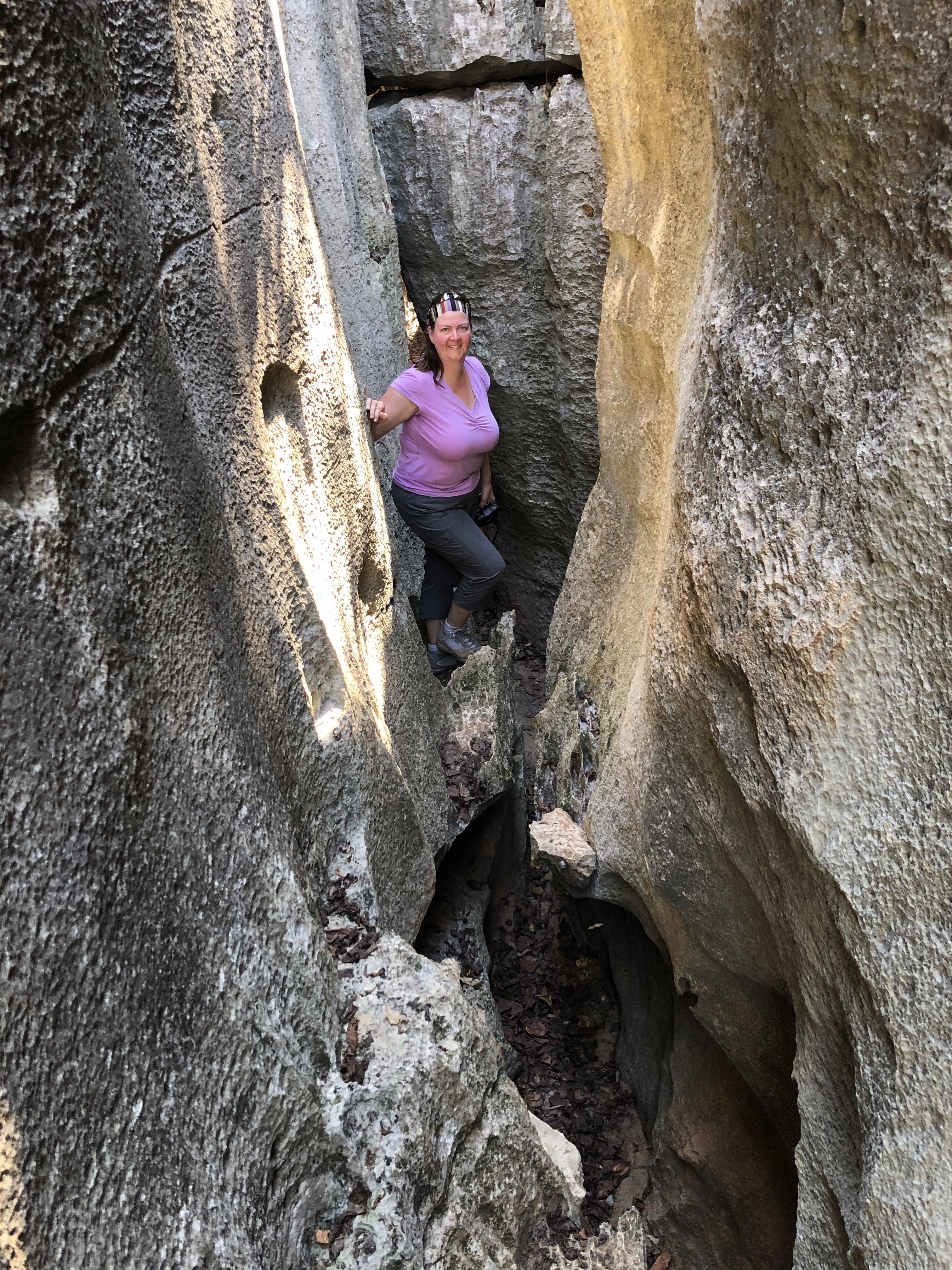


One of the two viewpoints.




It got tight in a few places and a little technical. At least the limestone is very grippy when dry.


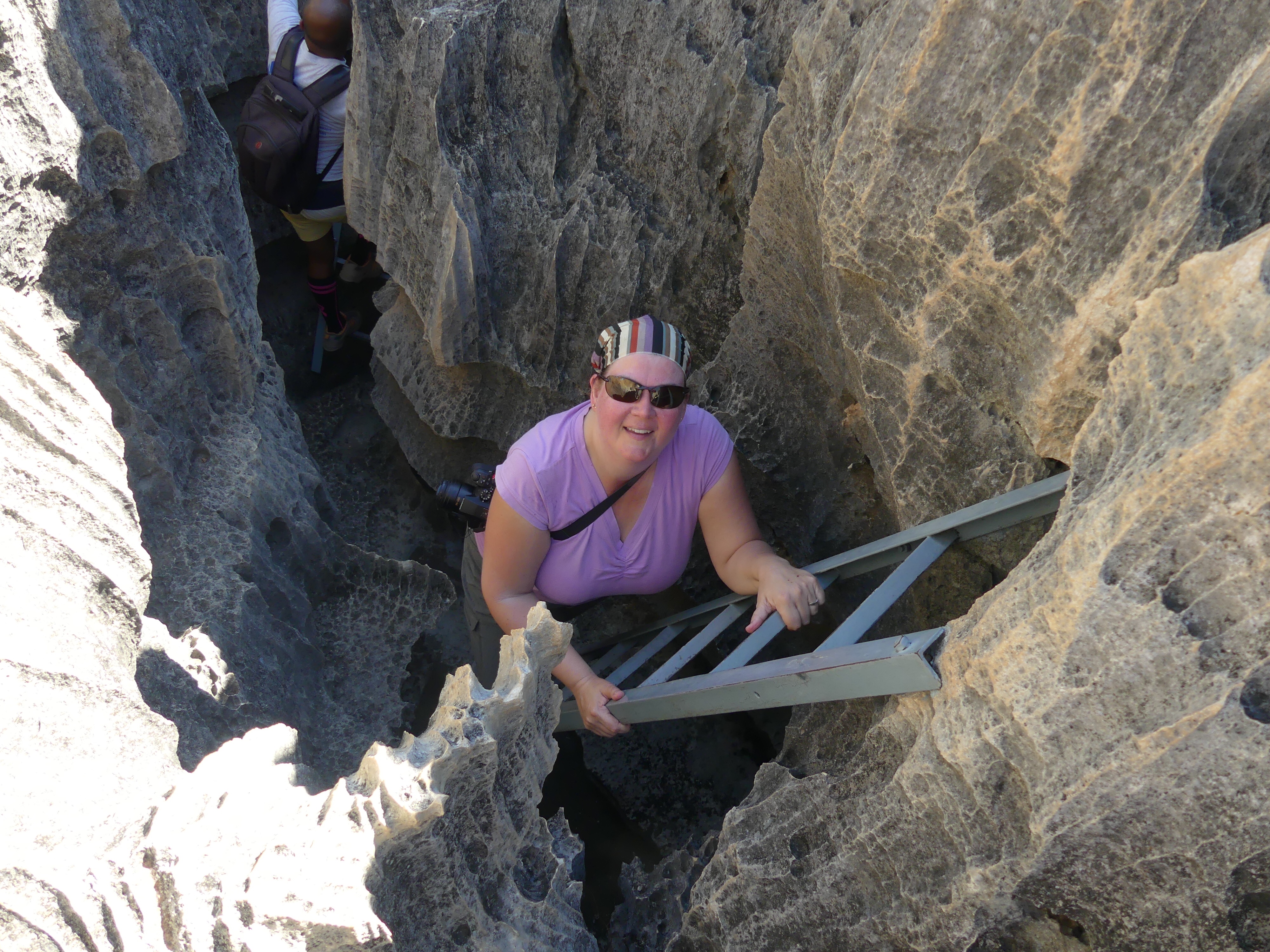
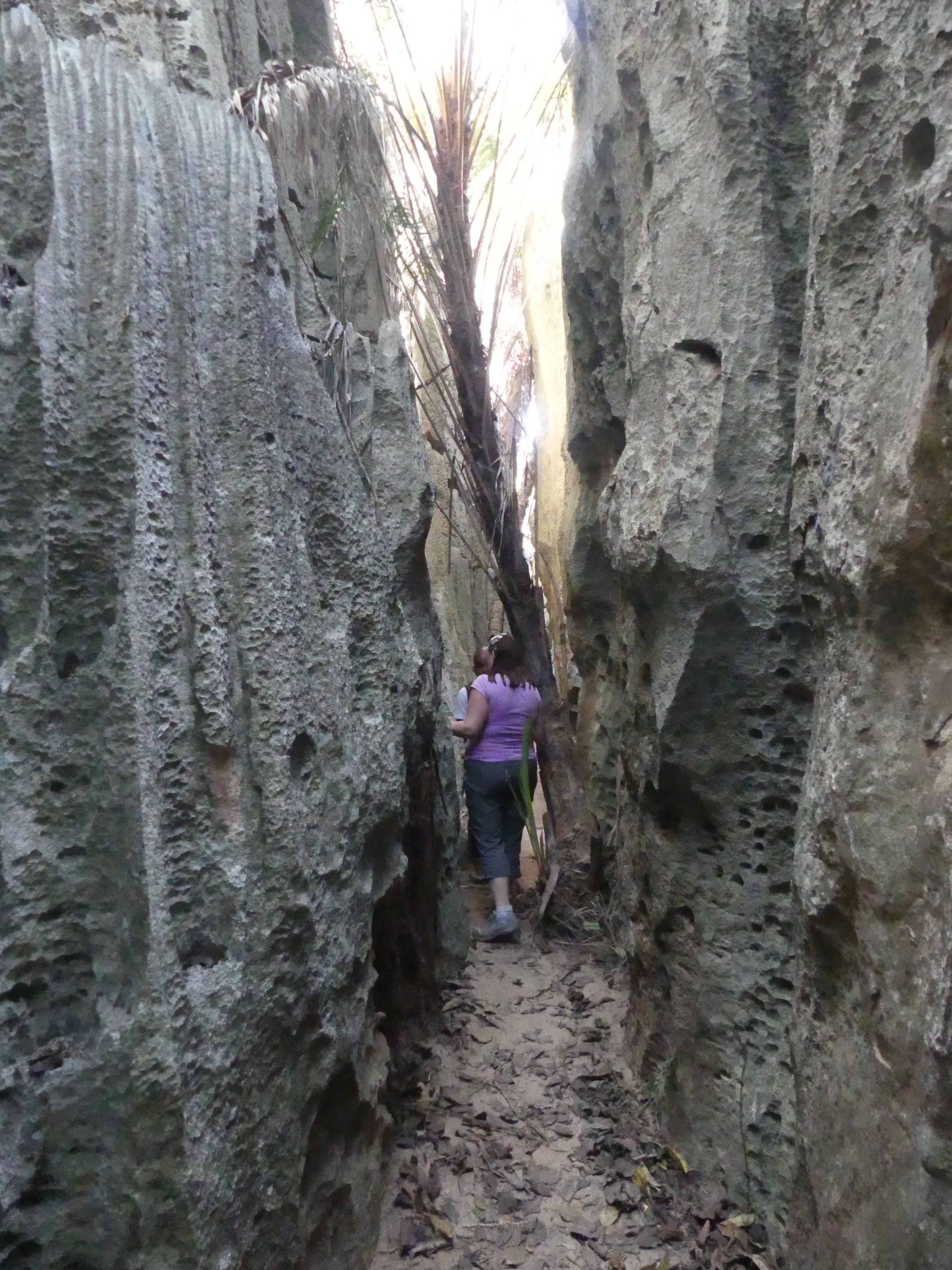






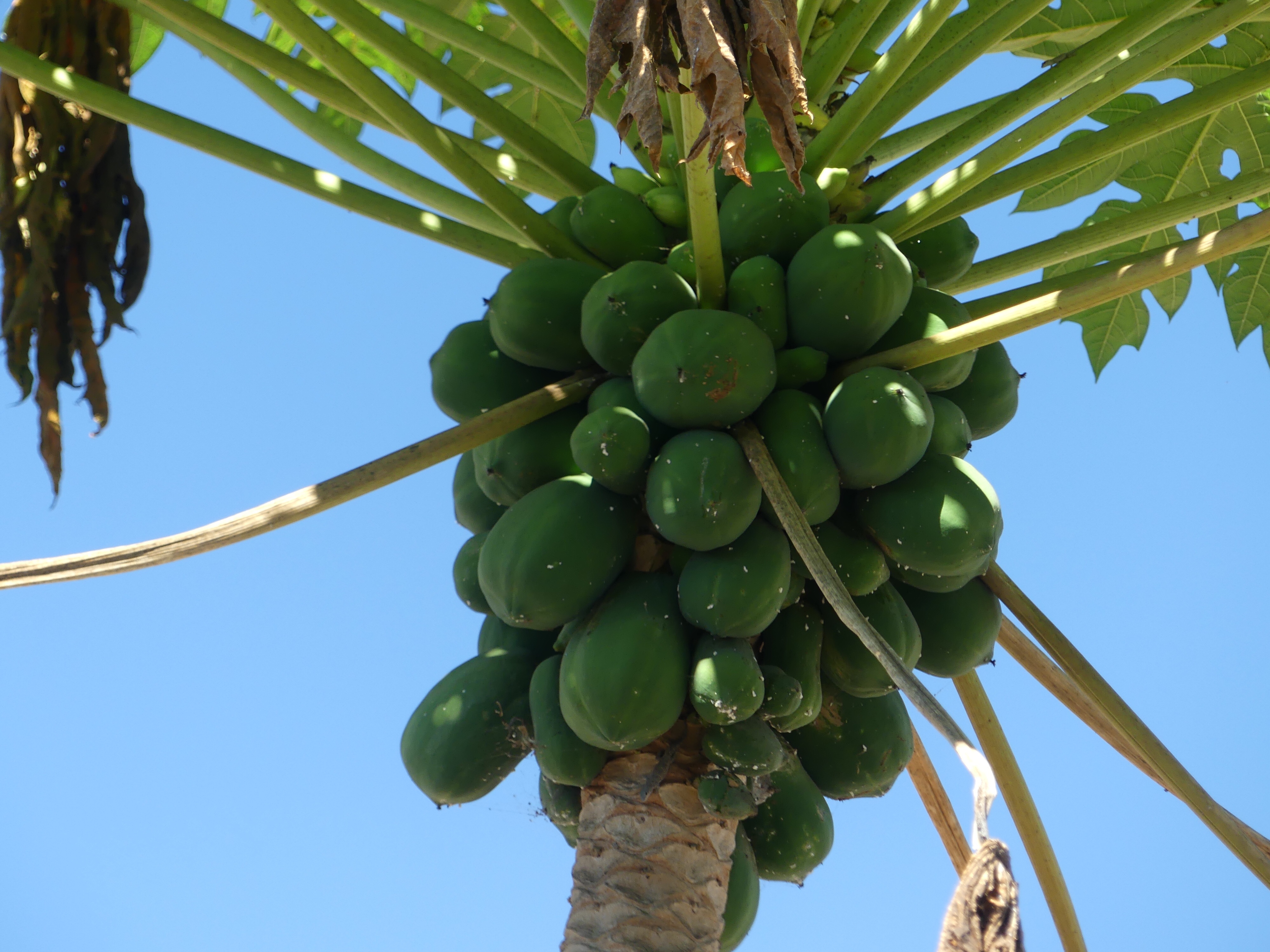
At the end of the trail we passed through Bekopaka, the local village. They grow papaya and rice here. Papaya are the shot above. Rice is drying on the old boat deck. The women will pound the dried rice in a large pot (kind of like a big mortar and pestle) to remove the husks.




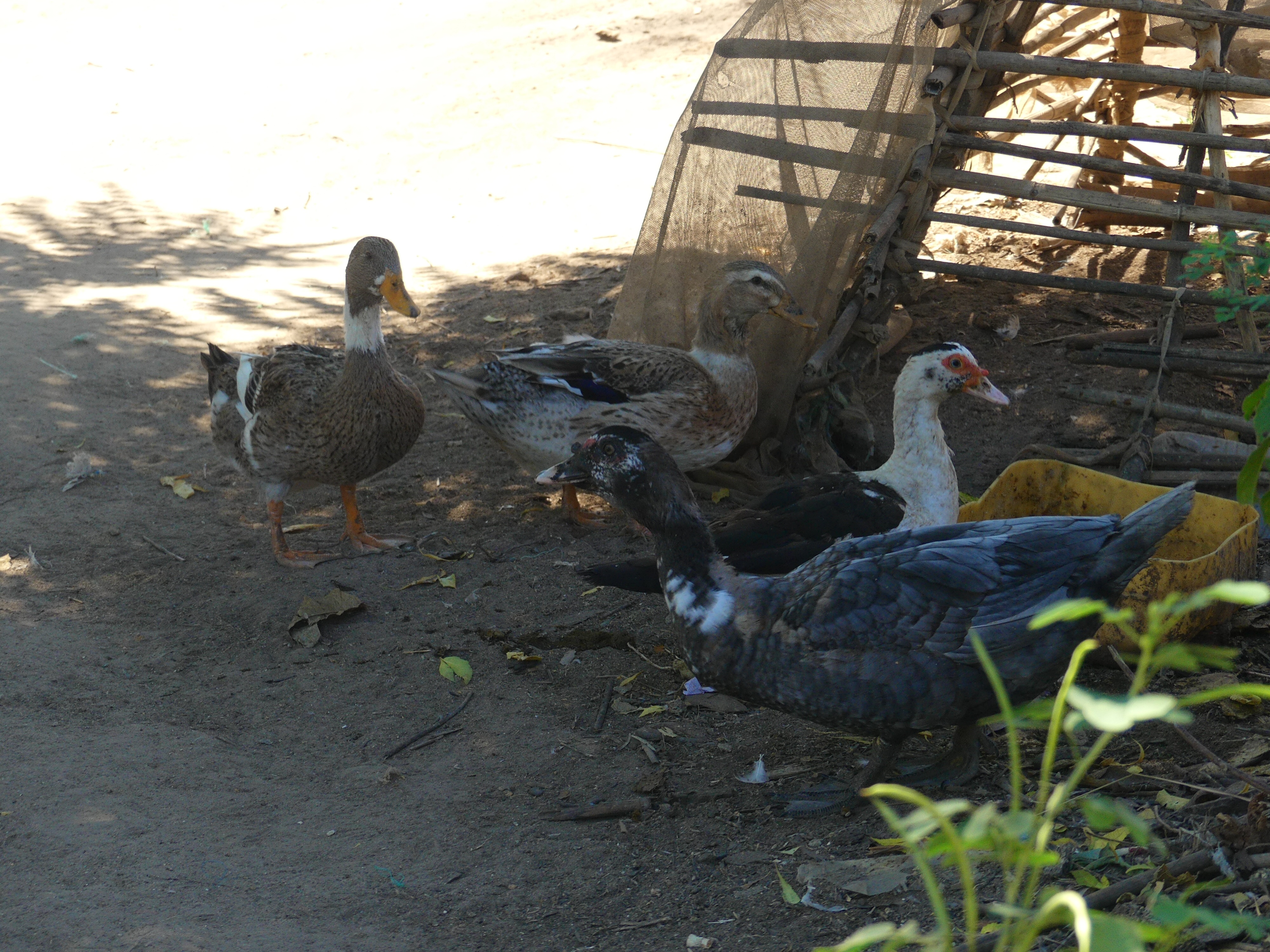




This pachypodium plant is called the Hand of Jesus, as it is hand-shaped and shows the stigmata from the nails on the cross.

After a hot but amazin`g hike we went back to the lodge for a very tasty lunch and then it was time to relax in that wonderful pool.
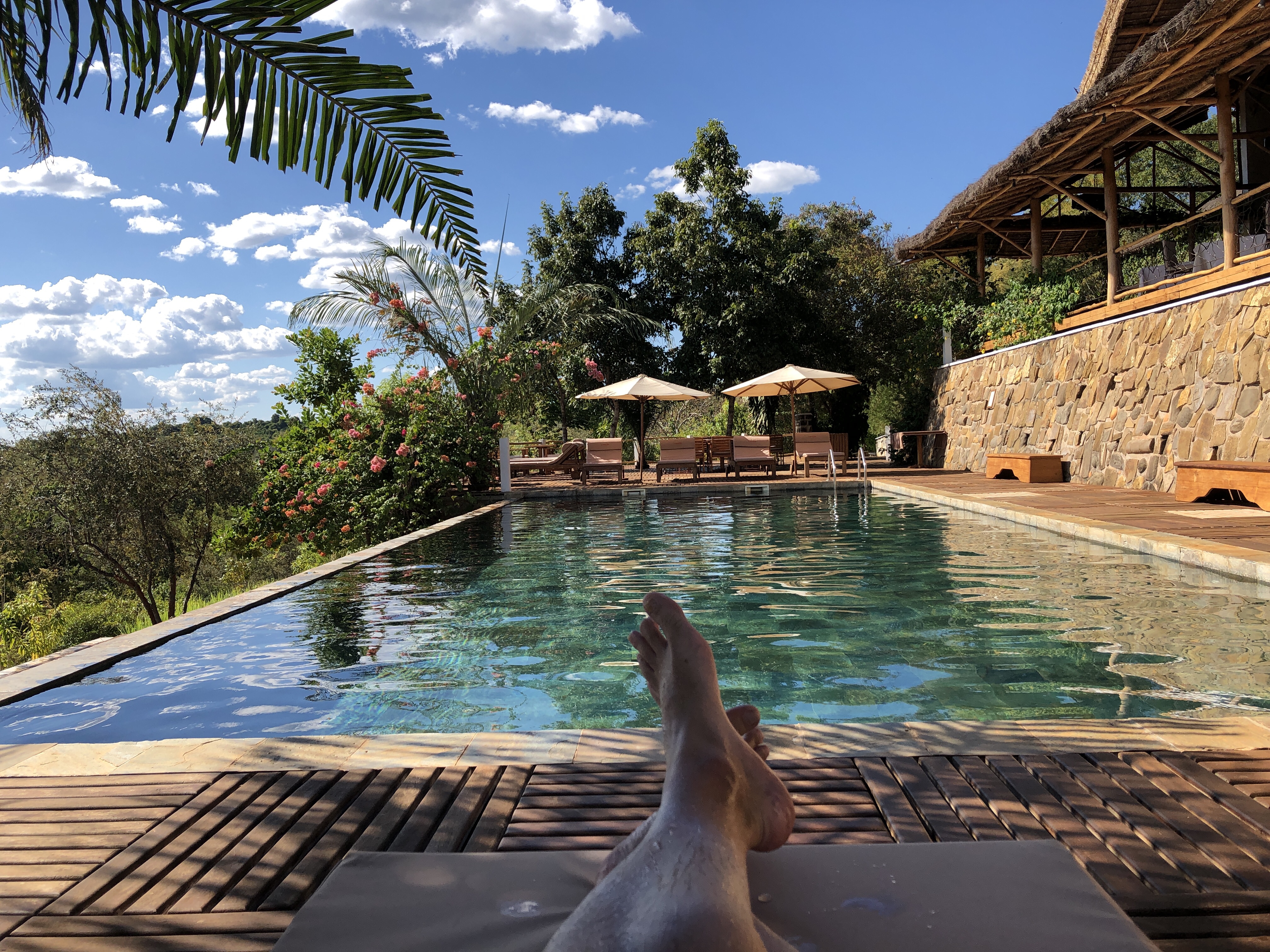
Tomorrow we head back out and hike the Grand Tsingy. The entrance to the park is only 17km from the hotel, but Miffy says it will take about 90 minutes to drive there – could we walk faster?? Should be equally as hot, tiring and amazing.
Amazing trip…enjoy.